Alberta
Calgary Stampede a calculated risk, potential example for post-COVID behaviour: mayor

EDMONTON — The Calgary Stampede, increasingly touted by Alberta Premier Jason Kenney as the brass ring for defeating COVID-19, won’t look like the whoop-up of years past if it goes ahead, says the city’s mayor.
Naheed Nenshi says there would still be distancing rules and other changes to keep people healthy and safe at what could be the first major Canadian post-COVID-19 festival.
“We really do have a chance to be world leaders in showing people how you can move forward with a bit of a return to normalcy, but still being very safe,” Nenshi, who also sits on the Stampede board, said Thursday.
“Certainly, this decision would be a lot easier, and this discussion would be a lot easier, if the Stampede were in August,” he added.
“(But) as long as the (COVID) numbers keep on the trajectories they’re on now, then the reward outweighs the risk.”
The world-renowned rodeo and fair is to open July 9.
Stampede spokeswoman Kristina Barnes said plans are for a scaled-down event with a priority on safety. Some indoor events could be moved outdoors.
She said talks continue on how the trademark Stampede parade could look.
The signature event, the chuckwagon races, will not go ahead for safety reasons, said Barnes. Chuckwagon racers have been on a lengthy layoff due to COVID-19.
“It would be extremely difficult to step from practice straight to a high-stakes championship,” said Barnes. “For the long-term health of the sport, it was a decision we had to make.”
The Stampede is Alberta’s signature summer event, famous for rodeos, chuckwagon races, pancake breakfasts, midway rides and alcoholic overindulgence.
In recent weeks, it has taken on political significance.
Kenney has frequently used the Stampede to symbolize a return to happier times should Albertans continue to get vaccinated and observe health restrictions.
He referenced the Stampede multiple times on Wednesday as he outlined a three-stage plan to reopen the economy and expand public gatherings — based on vaccination rates and hospitalizations.
Almost 60 per cent of Albertans 12 and older have received at least one shot.
Kenney said almost all restrictions will be lifted once 70 per cent of those eligible have had at least one vaccine dose. He said that could come as early as June 28.
Comparable provinces, including Ontario, British Columbia and Quebec, have similar phased reopening strategies, but not until later in the summer or into September
Just a month ago, Kenney’s United Conservative government was facing COVID-19 case rates that were the highest in North America.
Kenney said he might try to pull together the traditional premier’s Stampede pancake breakfast. A vaccination site on the Stampede grounds is also being explored.
Opposition NDP Leader Rachel Notley questioned whether Kenney is following science or risking public health with a speedy reopening for political reasons.
Kenney has faced plunging popularity numbers during the pandemic as well as a backlash from rural supporters and some of his UCP backbenchers over health restrictions they deem heavy-handed and punitive.
Political scientist Duane Bratt said it’s hard not to believe that the Stampede is driving Kenney’s timeline. The premier runs a huge risk if cases surge again or if the Stampede were perceived as a failure, he said.
“Everything has to go right for this. This is the most aggressive reopening of any place in Canada,” said Bratt of Mount Royal University in Calgary.
“Nothing would symbolize back to normal (better) than a Stampede.”
The event is not only an international tourist attraction, but also the unofficial start of a summer of political schmoozing, glad-handing and deal-making.
Political scientist Chaldeans Mensah said Kenney needs a popularity boost, not to mention the opportunity to meet face to face with supporters and to mend fences as required.
“That has hurt him politically. That inability to connect (one-on-one during COVID-19) has been very negative,” said Mensah with MacEwan University in Edmonton.
“He has not been able to quell some of the internal challenges that he’s faced. Stampede would offer him that opportunity.”
Political scientist Lori Williams said Kenney will still have to deal with the anger of those who lost loved ones during the pandemic or who feel he mishandled restrictions and economic supports.
On top of that, there is still a public fight with Alberta’s doctors and vocal concerns about a proposed new school curriculum, said Williams, also with Mount Royal University.
“The depth and breadth of the anger with this government is going to be a huge challenge to overcome.”
This report by The Canadian Press was first published May 27, 2021.
Dean Bennett, The Canadian Press
Alberta
Central Alberta MP resigns to give Conservative leader Pierre Poilievre a chance to regain a seat in Parliament
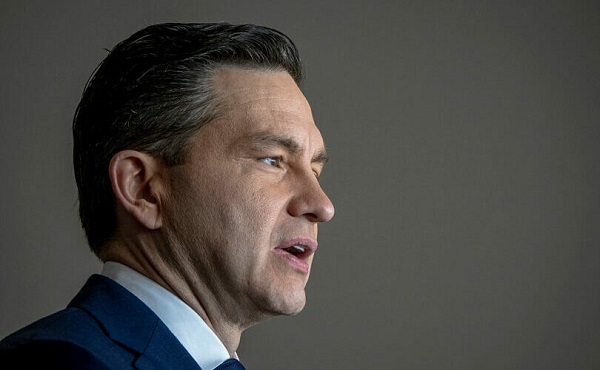
From LifeSiteNews
Conservative MP Damien Kurek stepped aside in the Battle River-Crowfoot riding to allow Pierre Poilievre to enter a by-election in his native Alberta.
Conservative MP Damien Kurek officially resigned as an MP in the Alberta federal riding of Battle River-Crowfoot in a move that will allow Conservative Party of Canada leader Pierre Poilievre to run in a by-election in that riding to reclaim his seat in Parliament.
June 17 was Kurek’s last day as an MP after he notified the House Speaker of his resignation.
“I will continue to work with our incredible local team to do everything I can to remain the strong voice for you as I support Pierre in this process and then run again here in Battle River-Crowfoot in the next general election,” he said in a statement to media.
“Pierre Poilievre is a man of principle, character, and is the hardest working MP I have ever met,” he added. “His energy, passion, and drive will have a huge benefit in East Central Alberta.”
Kurek won his riding in the April 28 election, defeating the Liberals by 46,020 votes with 81.8 percent of the votes, a huge number.
Poilievre had lost his Ottawa seat to his Liberal rival, a seat that he held for decades, that many saw as putting his role as leader of the party in jeopardy. He stayed on as leader of the Conservative Party.
Poilievre is originally from Calgary, Alberta, so should he win the by-election, it would be a homecoming of sorts.
It is now up to Prime Minister of Canada Mark Carney to call a by-election in the riding.
Carney had promised that he would “trigger” a by-election at once, saying there would be “no games” trying to prohibit Poilievre from running and win a seat in a safe Conservative riding.
Despite Kurek’s old seat being considered a “safe” seat, a group called the “Longest Ballot Committee” is looking to run hundreds of protest candidates against Poilievre in the by-election in the Alberta Battle River–Crowfoot riding, just like they did in his former Ottawa-area Carleton riding in April’s election.
Alberta
Alberta pro-life group says health officials admit many babies are left to die after failed abortions

From LifeSiteNews
Alberta’s abortion policy allows babies to be killed with an ‘induced cardiac arrest’ before a late-term abortion and left to die without medical care if they survive.
A Canadian provincial pro-life advocacy group says health officials have admitted that many babies in the province of Alberta are indeed born alive after abortions and then left to die, and because of this are they are calling upon the province’s health minister to put an end to the practice.
Official data from the Canadian Institute for Health Information (CIHI), which is the federal agency in charge of reporting the nation’s health data, shows that in Alberta in 2023-2024, there were 133 late-term abortions. Of these, 28 babies were born alive after the abortion and left to die.
As noted by Prolife Alberta’s President Murray Ruhl in a recent email, this means the reality in the province is that “some of these babies are born alive… and left to die.”
“Babies born alive after failed late-term abortions are quietly abandoned—left without medical help, comfort, or even a chance to survive,” noted Ruhl.
This fact was brought to light in a recent opinion piece published in the Western Standard by Richard Dur, who serves as the executive director of Prolife Alberta.
Ruhl observed that Dur’s opinion piece has “got the attention of both Alberta Health Services (AHS) and Acute Care Alberta (ACA),” whom he said “confirmed many of the practices we exposed.”
Alberta’s policy when it comes to an abortion committed on a baby older than 21 weeks allows that all babies are killed before being born, however this does not always happen.
“In some circumstances… the patient and health practitioner may consider the option of induced fetal cardiac arrest prior to initiating the termination procedures,” notes Alberta Health Services’ Termination of Pregnancy, PS-92 (PS-92, Section 6.4).
Ruhl noted that, in Alberta, before an “abortion begins, they stop the baby’s heart. On purpose. Why? Because they don’t want a live birth. But sometimes—the child survives. And what then?”
When it comes to the same policy for babies older that 21 weeks, the policy states, “For terminations after 21 weeks and zero (0) days there must be careful consideration and documentation concerning a Do Not Resuscitate order in anticipation of a possible live birth.” (PS-92, Section 6.4).”
Ruhl observed that the reality is, “They plan in advance not to save her—even if she’s born alive.”
If the baby is born alive, the policy states, “Comfort measures and palliative care should be provided.” (PS-92, Section 6.4).
This means, however, that there is no oxygen given, no NICU, “no medical care,” noted Ruhl.
“Their policies call this ‘palliative care.’ We call it what it is: abandonment. Newborns deserve care—not a death sentence,” he noted.
As reported by LifeSiteNews recently, a total of 150 babies were born after botched abortions in 2023-2024 in Canada. However, it’s not known how many survived.
Only two federal parties in Canada, the People’s Party of Canada, and the Christian Heritage Party, have openly called for a ban on late abortions in the nation.
Policy now under ‘revision’ says Alberta Health Services
Ruhl said that the province’s policies are now “under revision,” according to AHS.
Because of this, Ruhl noted that now is the time to act and let the province’s Health Minister, Adriana LaGrange, who happens to be pro-life, act and “demand” from her real “action to protect babies born alive after failed abortions.”
The group is asking the province to do as follows below:
- Amend the AHS Termination of Pregnancy policy to require resuscitative care for any baby born with signs of life, regardless of how the birth occurred.
- Require that these newborns receive the same level of care as any other premature baby. Newborns deserve care—not a death sentence.
- Recognize that these babies have a future—there is a literal waiting list of hundreds of families ready to adopt them. There is a home for every one of them.
While many in the cabinet and caucus of Alberta Premier Danielle Smith’s United Conservative government are pro-life, she has still been relatively soft on social issues of importance to conservatives, such as abortion.
-

 conflict2 days ago
conflict2 days ago“Evacuate”: Netanyahu Warns Tehran as Israel Expands Strikes on Iran’s Military Command
-

 Health2 days ago
Health2 days agoLast day and last chance to win this dream home! Support the 2025 Red Deer Hospital Lottery before midnight!
-
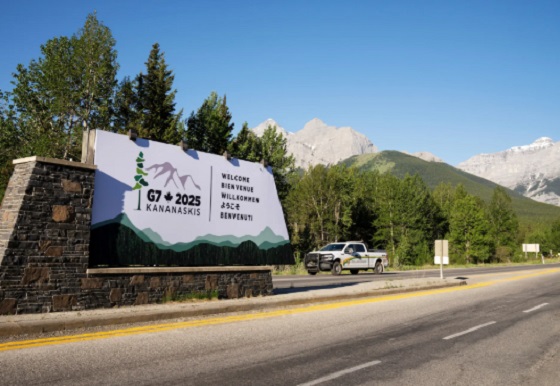
 Energy1 day ago
Energy1 day agoKananaskis G7 meeting the right setting for U.S. and Canada to reassert energy ties
-
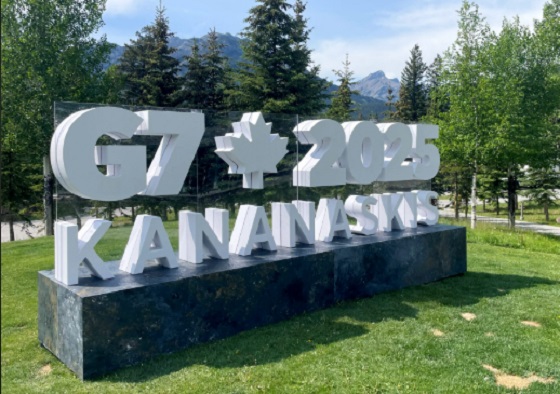
 Business1 day ago
Business1 day agoCarney’s Honeymoon Phase Enters a ‘Make-or-Break’ Week
-
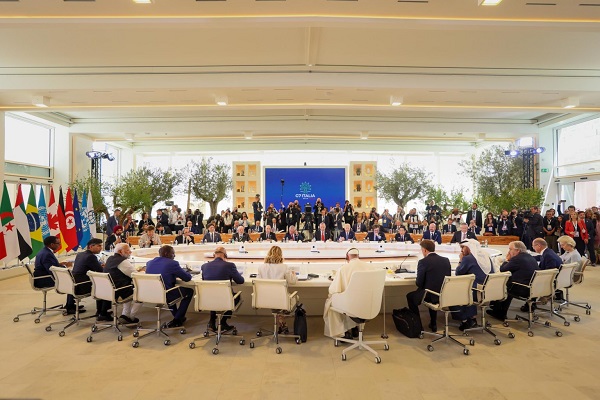
 Energy2 days ago
Energy2 days agoCould the G7 Summit in Alberta be a historic moment for Canadian energy?
-

 Aristotle Foundation2 days ago
Aristotle Foundation2 days agoThe Canadian Medical Association’s inexplicable stance on pediatric gender medicine
-
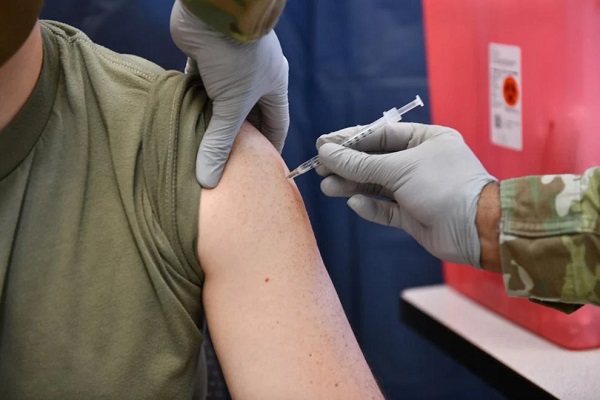
 Alberta2 days ago
Alberta2 days agoAlberta announces citizens will have to pay for their COVID shots
-

 conflict1 day ago
conflict1 day agoIsrael bombs Iranian state TV while live on air






